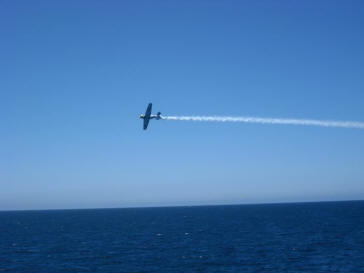For No Reason At All We Were Attacked By The Luftwaffe (Page Four)

Did you know? - At the outset of the war, the Luftwaffe was one of the most modern, powerful, and experienced air forces in the world, dominating the skies over continental Europe (but was unable to dominate the skies over the English Channel, North Sea or the British Isles), and with aircraft much more advanced than their foreign counterparts (with the exception of the British RAF Supermarine Spitfire). The Luftwaffe was central to the German Blitzkrieg (lightning war) doctrine, as the close air support provided by various medium two-engine bombers, Stuka dive bombers and an overwhelming force of tactical fighters were key to several early successes. Unlike the British and American Air Forces, the Luftwaffe never developed four-engine bombers in any significant numbers, and was thus unable to conduct an effective long-range strategic bombing campaign against either the Russians or the Western Allies.

Out of the West they come


We caught the German Spy
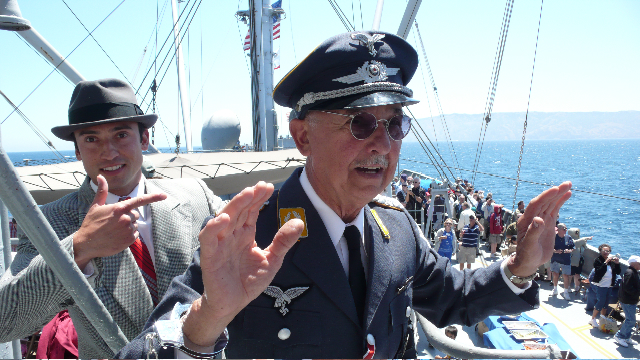
Bang!

The spy is cornered and everyone forgets the food
Did you know? - Incidents of espionage are well documented throughout history. The ancient writings of Chinese and Indian military strategists such as Sun-Tzu and Chanakya contain information on deception and subversion. Chanakya's student Chandragupta Maurya, founder of the Maurya Empire in India, made use of assassinations, spies and secret agents, which are described in Chanakya's Arthasastra. The ancient Egyptians had a thoroughly developed system for the acquisition of intelligence, and the Hebrews used spies as well, as in the story of Rahab. Spies were also prevalent in the Greek and Roman empires.
During the 13th and 14th centuries, the Mongols relied heavily on espionage in their conquests in Asia and Europe. Feudal Japan often used ninja to gather intelligence. More recently, spies played a significant part in Elizabethan England (see Francis Walsingham). Many modern espionage methods were well established even then

Coming in

Hope they do NOT have torpedoes
Did you know? - The modern torpedo (historically called an automotive, automobile, locomotive, or fish torpedo; colloquially called "fish") is a self-propelled explosive projectile weapon, launched above or below the water surface, propelled underwater toward a target, and designed to detonate on contact with, or in proximity to, a target. The term torpedo was originally used for a variety of devices, most of which would today be called mines. From about 1900 "torpedo" has been used only for an underwater self-propelled missile.


What is he up to???

They are circling for the kill!

The Brave Crew Watch On...

"What? Me worry?"

Yep! Just like it really was 65 years ago!


The Americans come to the rescue

Got one!

Another one... Dropping like flies!

Friends No Flying In Formation



We All Won... Back To
Did you know? - In 1542, Juan Rodriquez Cabrillo discovered the "Bay of Smokes". The south-facing San Pedro Bay was originally a shallow mudflat, too soft to support a wharf. Visiting ships had two choices: stay far out at anchor and have their goods and passengers ferried to shore; or beach themselves. That sticky process is described in Two Years Before the Mast by Richard Henry Dana, Jr., who was a crewmember on an 1834 voyage that visited San Pedro Bay.
Phineas Banning greatly improved shipping when he dredged the channel to Wilmington in 1871 to a depth of 10 feet (3.0 m). The port handled 50,000 tons of shipping that year. Banning owned a stagecoach line with routes connecting San Pedro to Salt Lake City, Utah and to Yuma, Arizona, and in 1868 he built a railroad to connect San Pedro Bay to Los Angeles, the first in the area.
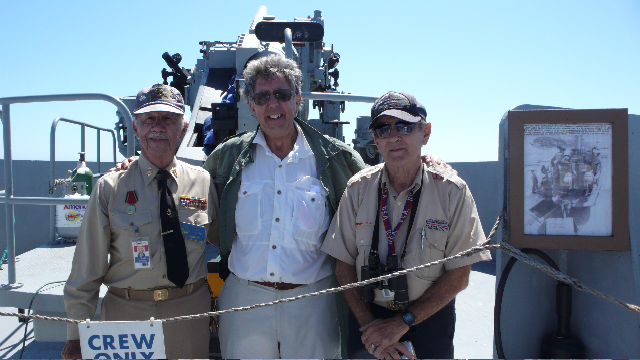
Brian joined the
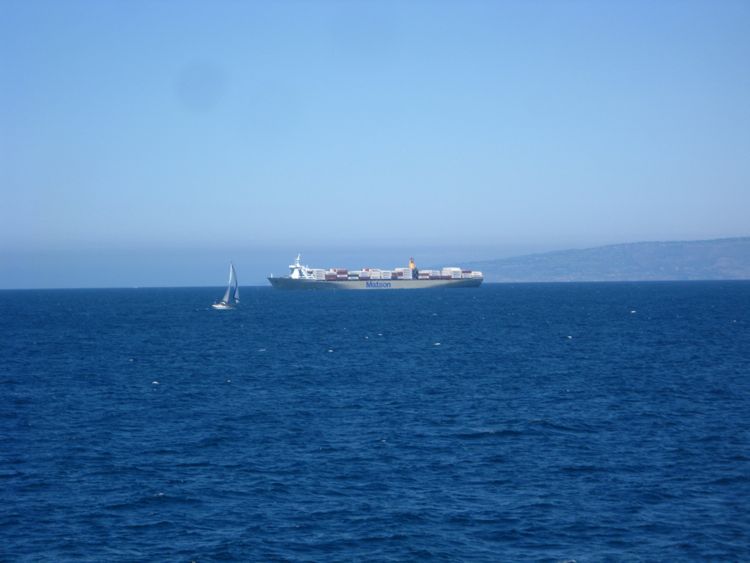
We had others nearby
To Another Museum

The boys liked the engine on display

Wow! Used to train WWI
Did you know? - William Gruber, an organ maker and avid photographer, lived in Portland, Oregon. While on vacation, he met Harold Graves, of Sawyer's. Both Graves and Gruber had developed devices for viewing stereo images. Gruber had made up a stereo imaging rig out of two Kodak Bantam Specials mounted together on a tripod. He had the idea of updating the old-fashioned stereoscope by using the new Kodachrome 16-mm color film, which recently had become available. While a View-Master disk holds 14 film slides, these really are only seven pairs, making up the seven stereoscopic images; two film slides are viewed simultaneously, one for each eye, thus simulating binocular depth perception.
In late 1939, the View-Master was introduced at the New York World's Fair (marked "Patent Applied For"). It was intended as an alternative to the scenic postcard, and was originally sold at photography shops, stationery stores, and scenic-attraction gift shops. The main subjects of View-Master disks were Carlsbad Caverns and the Grand Canyon.

Kodachrome slides used for identifying ship
Did you know? - Kodachrome was invented in the early 1930s by two professional musicians, Leopold Godowsky, Jr. and Leopold Mannes, hence the comment that "Kodachrome was made by God and Man". It was first sold in 1935 as 16 mm movie film. In 1936 it was made available in 8 mm movie film, and slide film in both 35mm and 828 formats. Kodachrome would eventually be produced in a wide variety of film formats including 120 and 4x5, and in ISO/ASA values ranging from 8 to 200.
As digital photography progressively reduced the demand for film in the first decade of the 21st century, Kodachrome sales steadily declined. On June 22, 2009 Eastman Kodak Co. announced the end of Kodachrome production, citing declining demand.
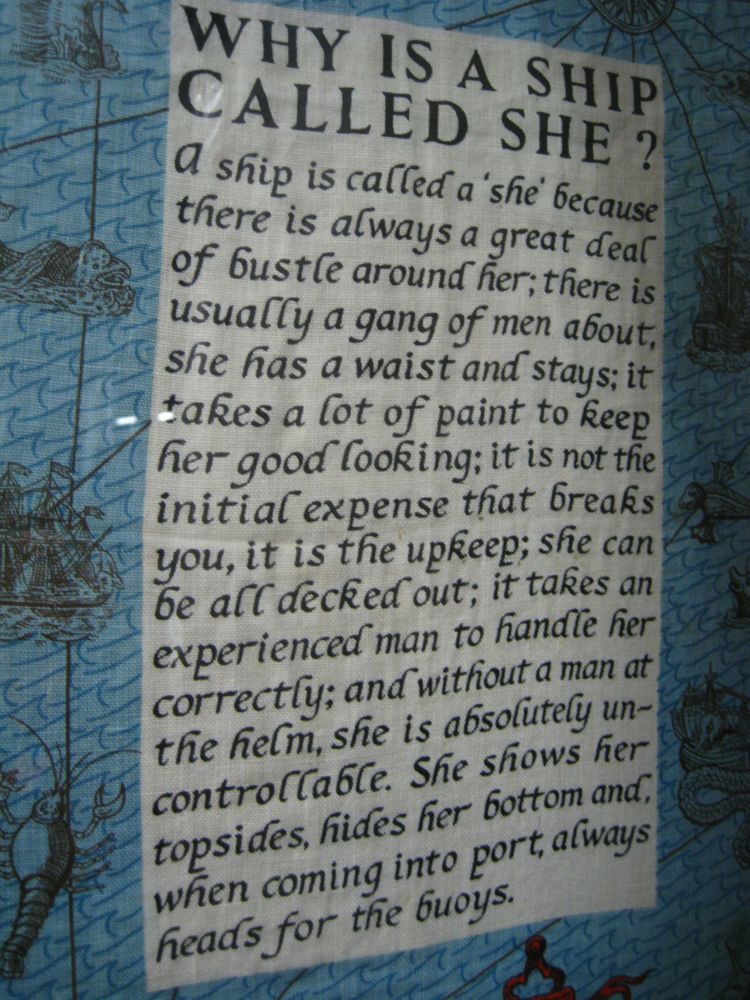

No words needed
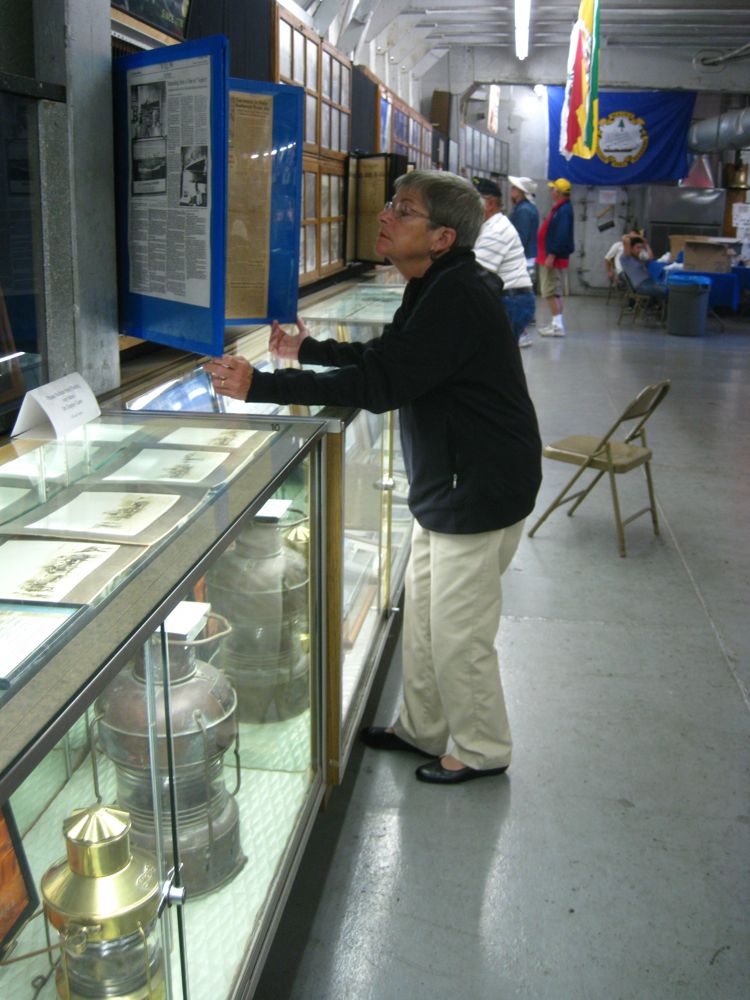
Newspapers of yesteryear


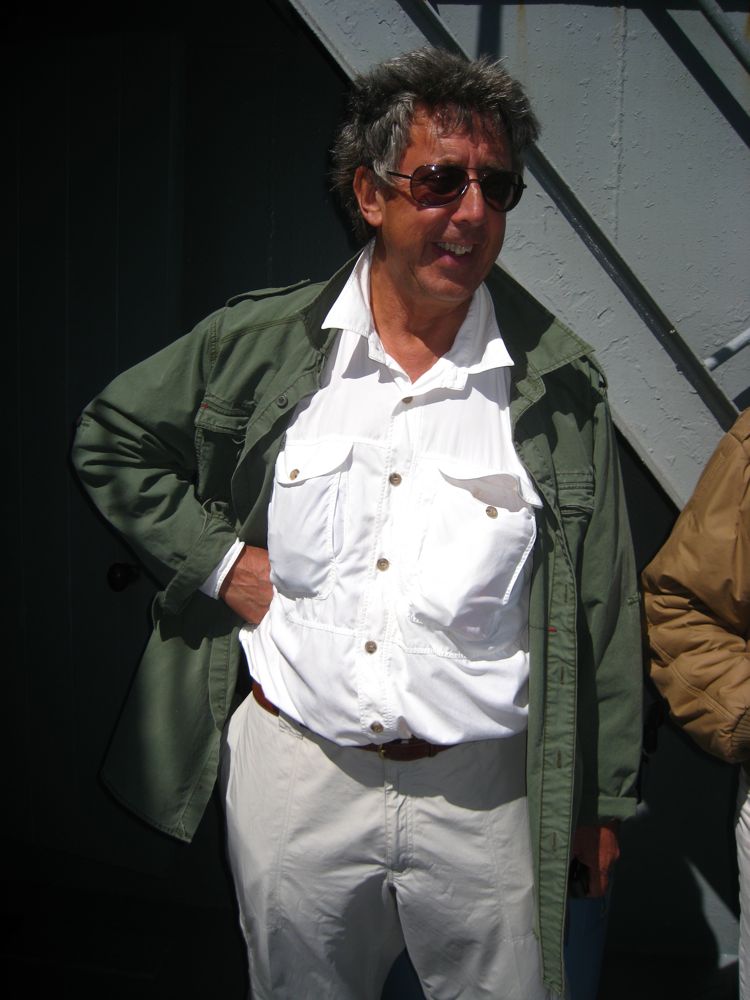
Time To Dance


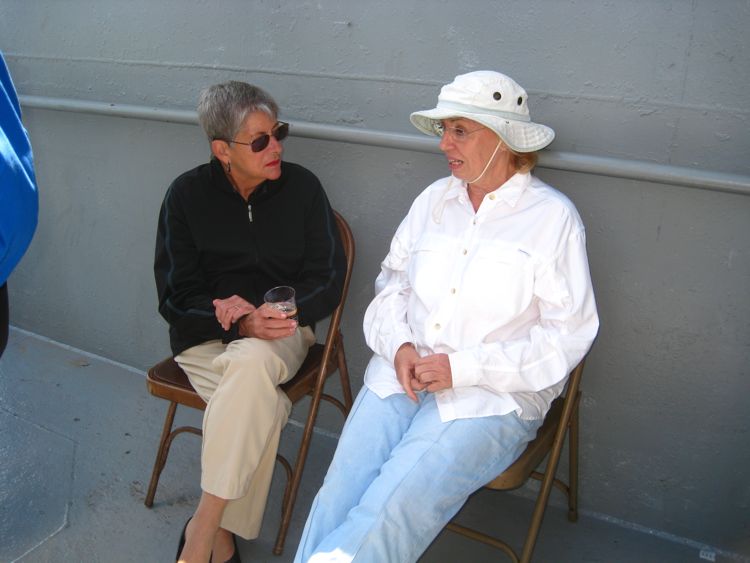

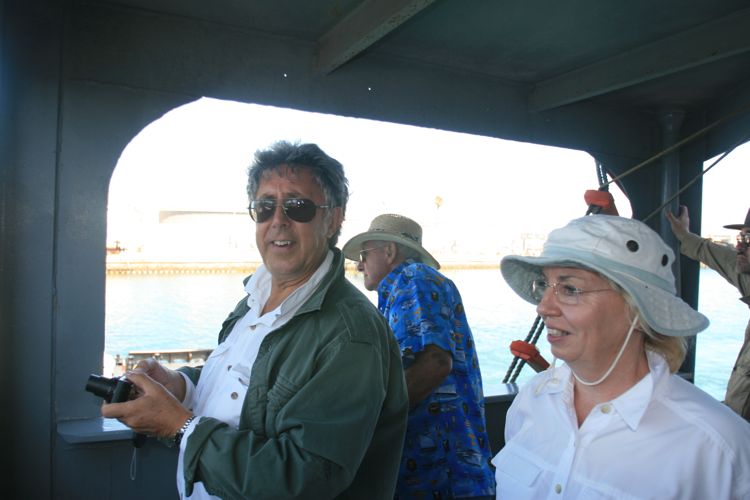

Picked up by the tug at the breakwater

Greeted By The Fireboat
Did you know? - Modern fireboats are capable of pumping tens of thousands of gallons of water per minute. An example is Fire Boat #2 of the Los Angeles Fire Department, the Warner Lawrence, with the capability to pump up to 38,000 US gallons per minute (2.4 m3/s; 32,000 imp gal/min) and up to 400 feet (122 m) in the air.

Did you know? - The earliest container ships were converted tankers, built up from surplus T2 tankers after World War II. In 1951 the first purpose-built container vessels began operating in Denmark, and between Seattle and Alaska.
The first container ship in the United States was the Ideal-X , a T2 tanker, owned by Malcom McLean, which carried 58 metal containers between Newark, New Jersey and Houston, Texas on its first voyage, in April 1956.
Today, approximately 90% of non-bulk cargo worldwide is transported by container, and modern container ships can carry up to 15,000 Twenty-foot equivalent units (TEU). As a class, container ships now rival crude oil tankers and bulk carriers as the largest commercial vessels on the ocean.
Informally known as "box boats," they carry the majority of the world's dry cargo, meaning manufactured goods. Cargoes like metal ores or coal or wheat are carried in bulk carriers. There are large main line vessels that ply the deep sea routes, then many small "feeder" ships that supply the large ships at centralized hub ports. Most container ships are propelled by diesel engines, and have crews of between 20 and 40 people. They generally have a large accommodation block at the stern, near the engine room. Container ships now carry up to 15,000 TEU (approximately equivalent to 35 100-car double-stack intermodal freight trains) on a voyage. The world's largest container ships, the M/V Emma Mærsk and her sisters, have a capacity of 15,200 containers.
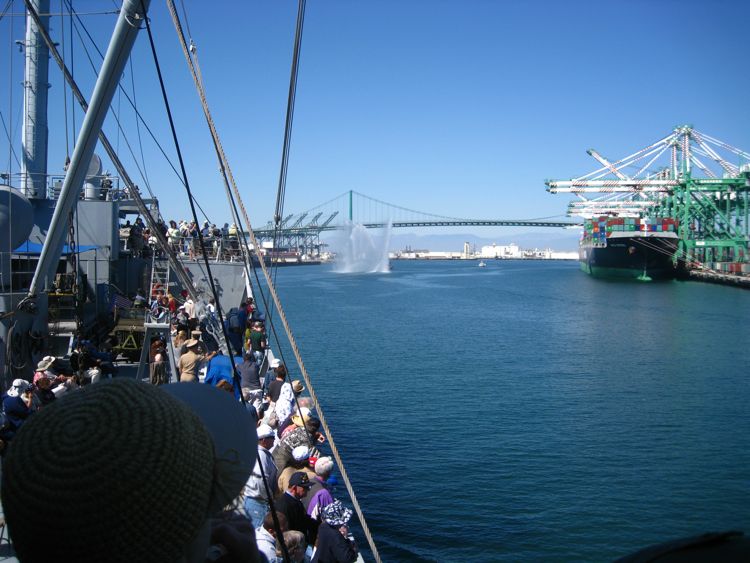
Cargo Transports At Work


The Seals are funny
Did you know? - A bulbous bow is a protruding bulb at the bow (or front) of a ship just below the waterline. The bulb modifies the way the water flows around the hull, reducing drag and thus increasing speed, range, fuel efficiency, and stability. Large ships with bulbous bows generally have a 12 to 15 percent better fuel efficiency than similar vessels without them.
In a conventionally shaped bow, a bow wave forms immediately before the bow. When a bulb is placed below the water ahead of this wave, water is forced to flow up over the bulb. If the trough formed by water flowing off of the bulb coincides with the bow wave, the two partially cancel out and reduce the vessel's wake. While inducing another wave stream saps energy from the ship, canceling out the second wave stream at the bow changes the pressure distribution along the hull, thereby reducing wave resistance. The effect that pressure distribution has on a surface is known as the form effect.

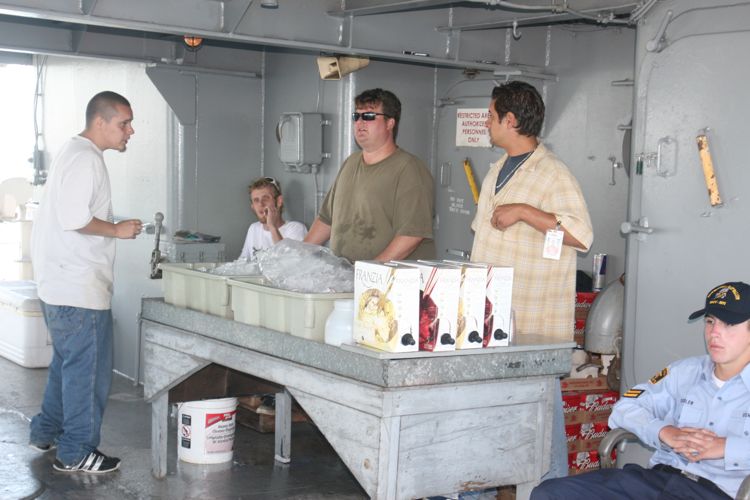
The wine department... Our favorite

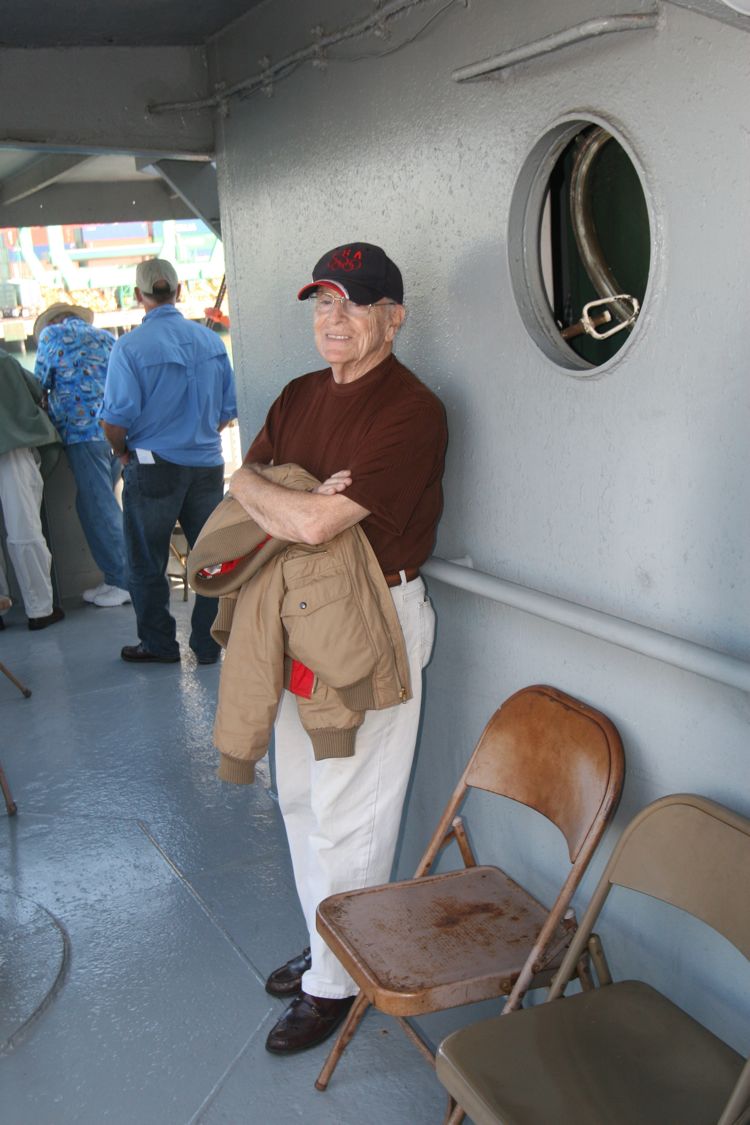
Did someone say wine?

Thanks To The Tugs

Push push!

He is working hard

Where is the gangplank

Did you know? - Walking the plank was a form of murder or torture thought to have been practiced by pirates, mutineers and other rogue seafarers. The victim was forced to walk off the end of a wooden plank or beam extended over the side of a ship, falling into the water to drown, sometimes with bound hands or weighed down, often into the vicinity of sharks (which would often follow ships).
The earliest known use of the phrase is the latter half of the 18th century. Some writers in the 20th century speculated that walking the plank may be a myth created by cinema; however, the phrase "walking the plank" is recorded in English writer Francis Grose's "Dictionary of the Vulgar Tongue", which was published in 1788 (first published in 1785).
Home Sweet Home
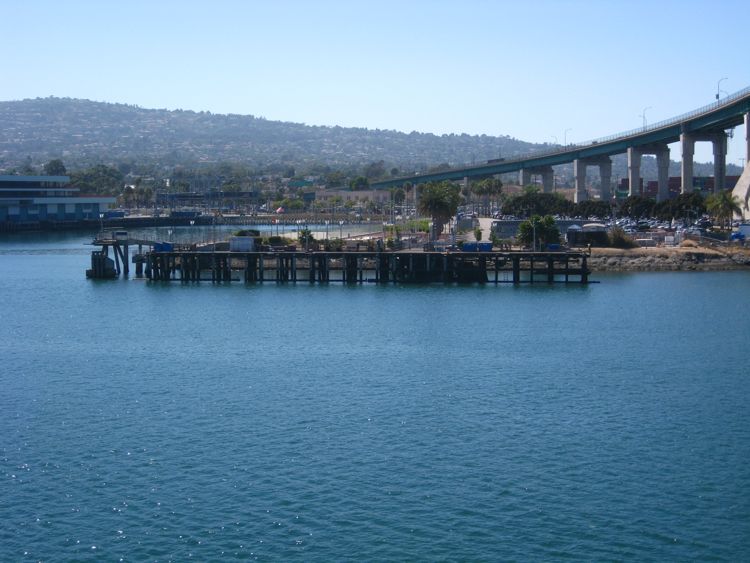


Oh oh... They are taking it apart
Did you know? - By the turn of the 20th century larger ships meant more people could travel, but safety rules in regard with lifeboats stayed out of date - for example, British legislation concerning the number of lifeboats was based on the tonnage of a vessel and only encompassed vessels of "10,000 gross tons and over". It was after the sinking of the RMS Titanic on April 15, 1912, that a movement began to require a sufficient number of lifeboats on passenger ships for all people on board.
The Titanic, with a gross tonnage of 46,000 tones and carrying 20 lifeboats, met and exceeded the regulations laid down by the Board of Trade, which required a ship of her size (i.e. over 10,000 tons) to carry boats capable of carrying a total of 1,060 people. The Titanic's boats had a capacity of 1,178 people on a ship capable of carrying 3,330 people.
The need for so many more lifeboats on the decks of passenger ships after 1912 led to the use of most of the deck space available even on the large ships, creating the problem of restricted passageways. This was resolved by the introduction of collapsible lifeboats, a number of which (Berthon Boats) had been carried on the Titanic.~Wikipedia


M-m-m-m
Off We Go Back To Reality




"I'm staying on board!"






